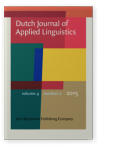Vol. 4:2 (2015) ► pp.241–256
The EPPM put to the test
Evaluating four basic propositions
Fear appeals are frequently used in health communication, for example in anti-smoking campaigns. Of the different theoretical models that predict and explain how fear appeals work, the Extended Parallel Process Model (EPPM; Witte, 1992) is probably used most often. However, most propositions of the EPPM were not explicitly tested, or received mixed empirical support (Popova, 2012). To clarify the relationships between the variables of the EPPM, four of the EPPM’s propositions were tested by performing correlational and mediation analyses. The results (n = 116) show that a large part of the relationships between the concepts of the EPPM and the outcomes of fear appeals differ from what the EPPM claims: threat and intention did not prove to be related, threat did not mediate the effect of fear on intention, and fear did not prove to influence the fear control responses. The findings from this study raise questions regarding the appropriateness of the EPPM.
